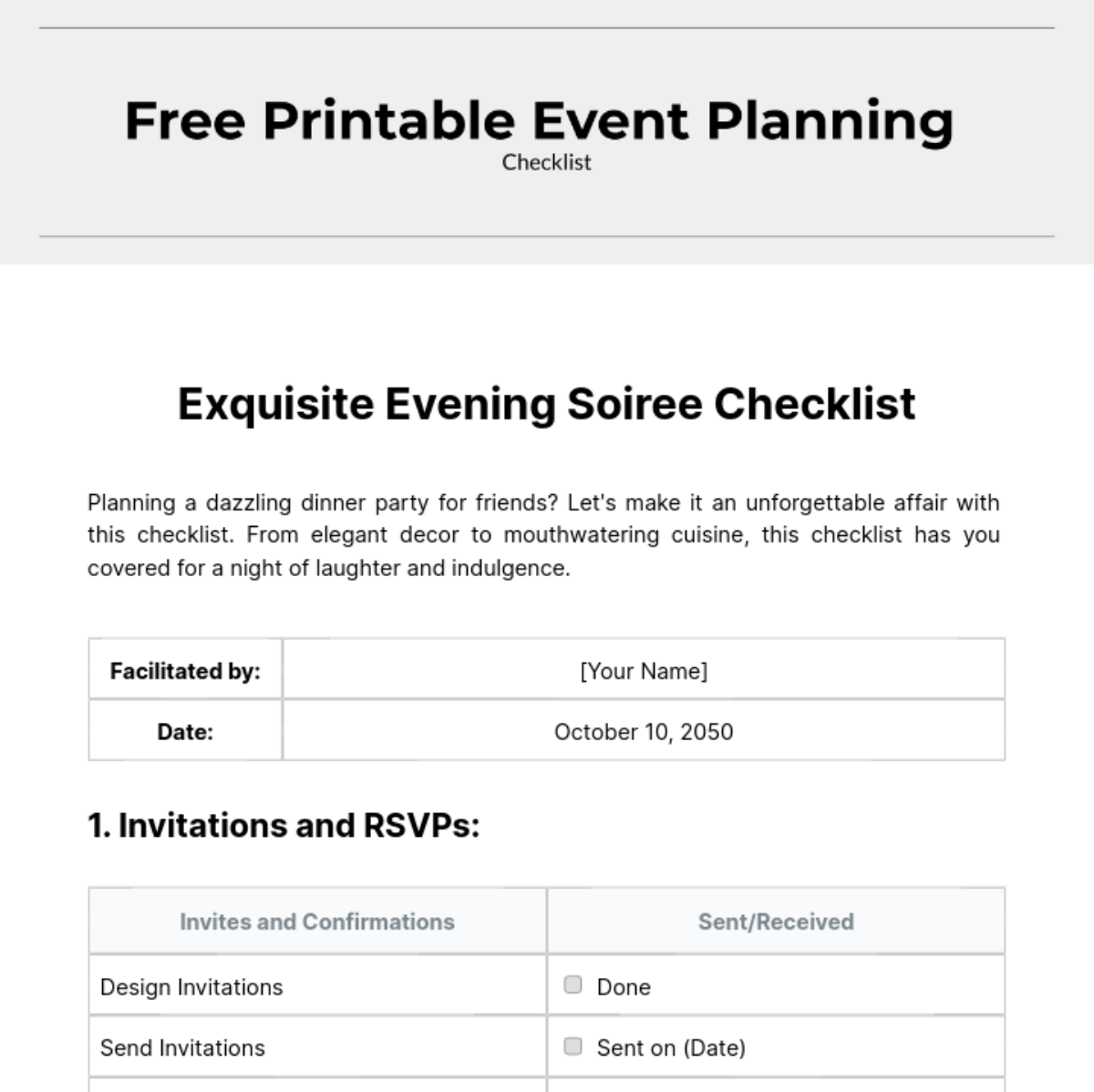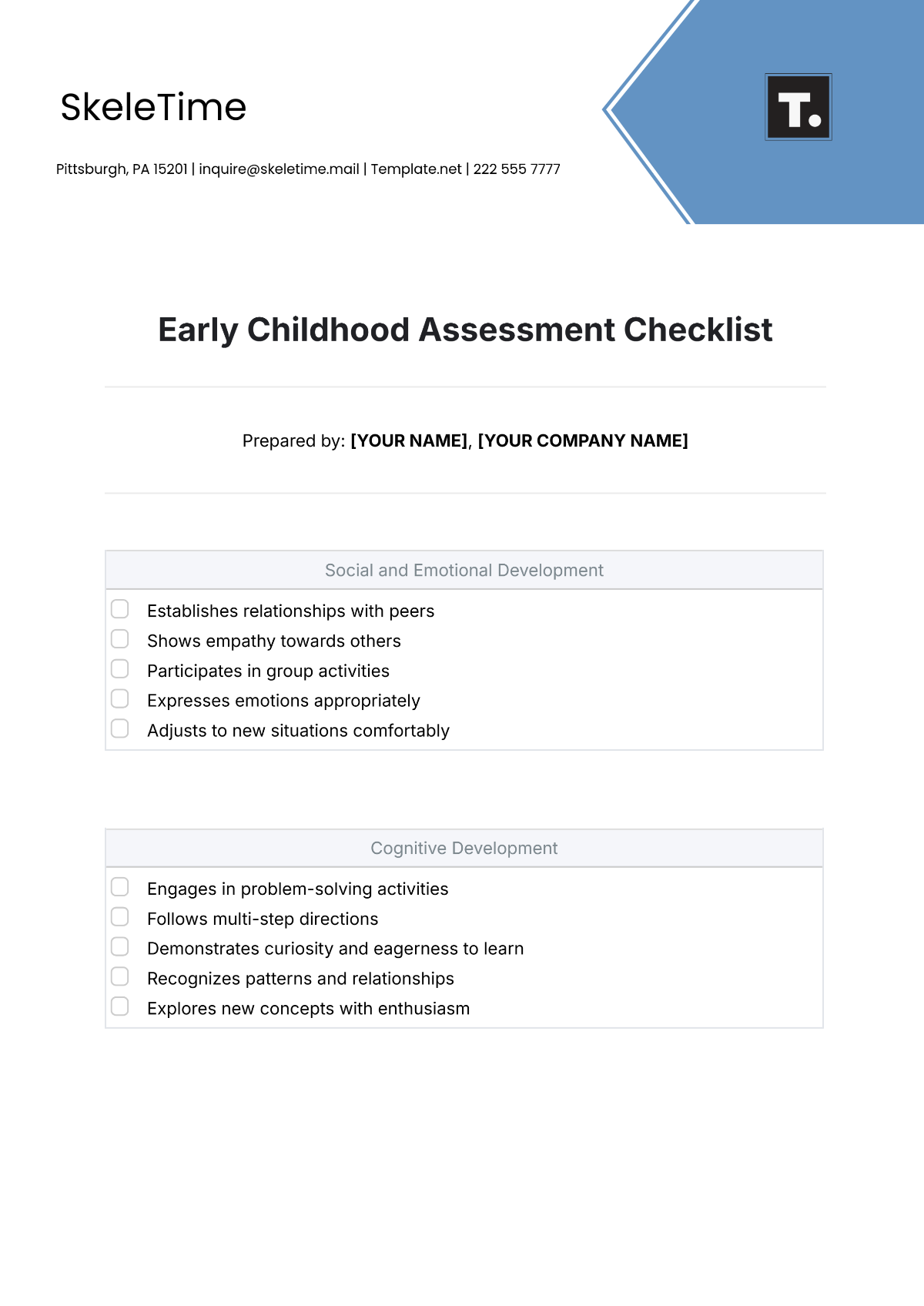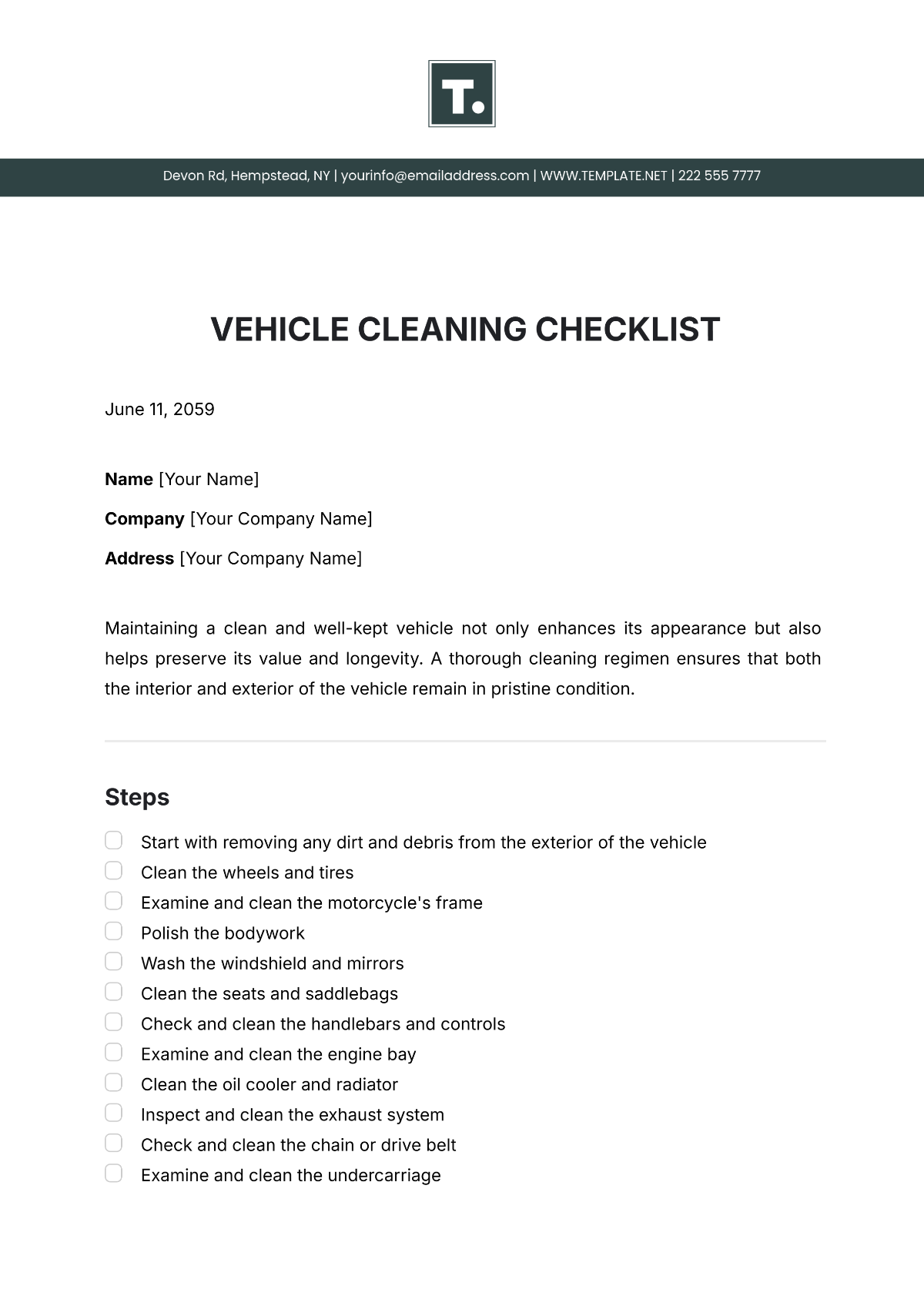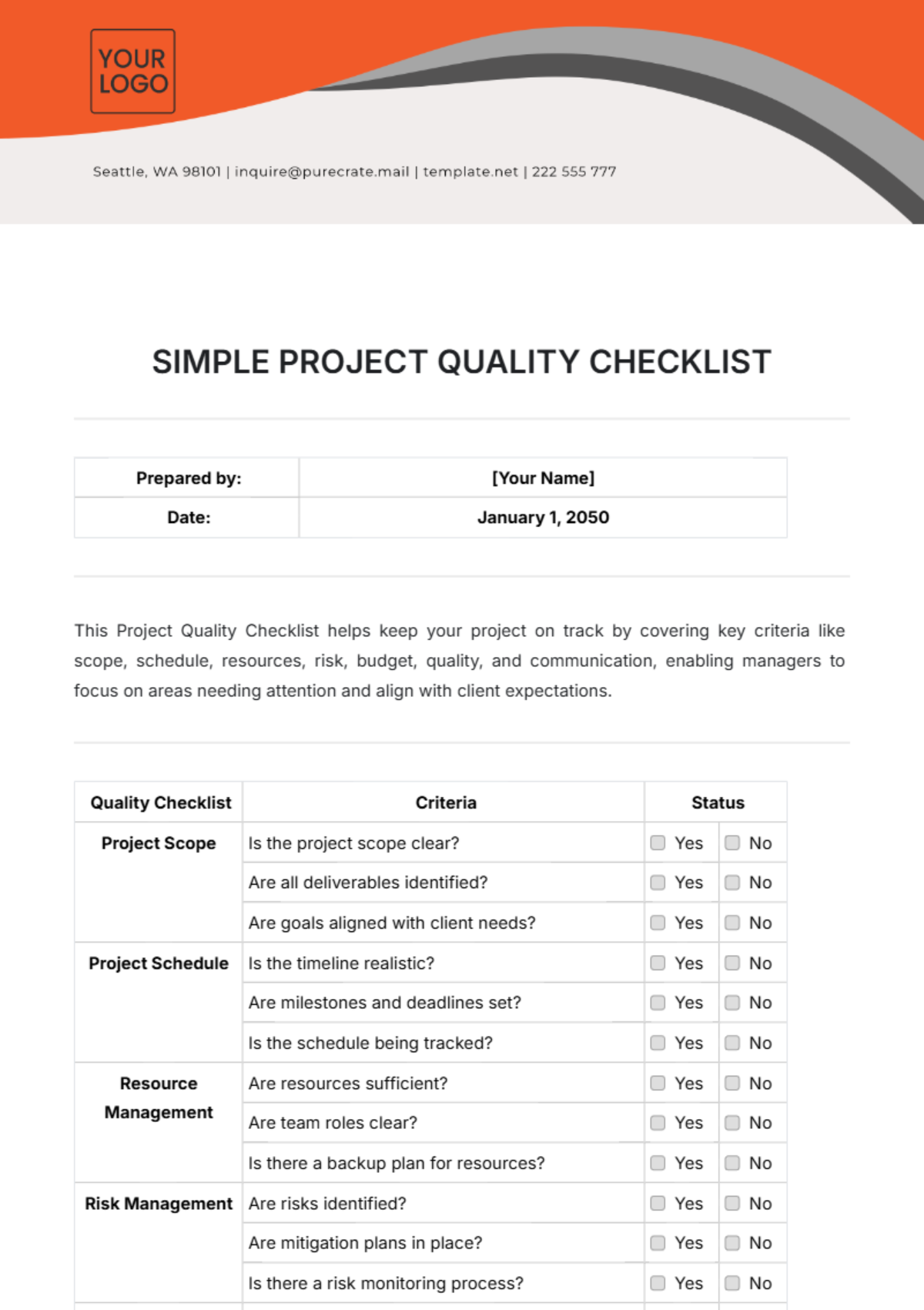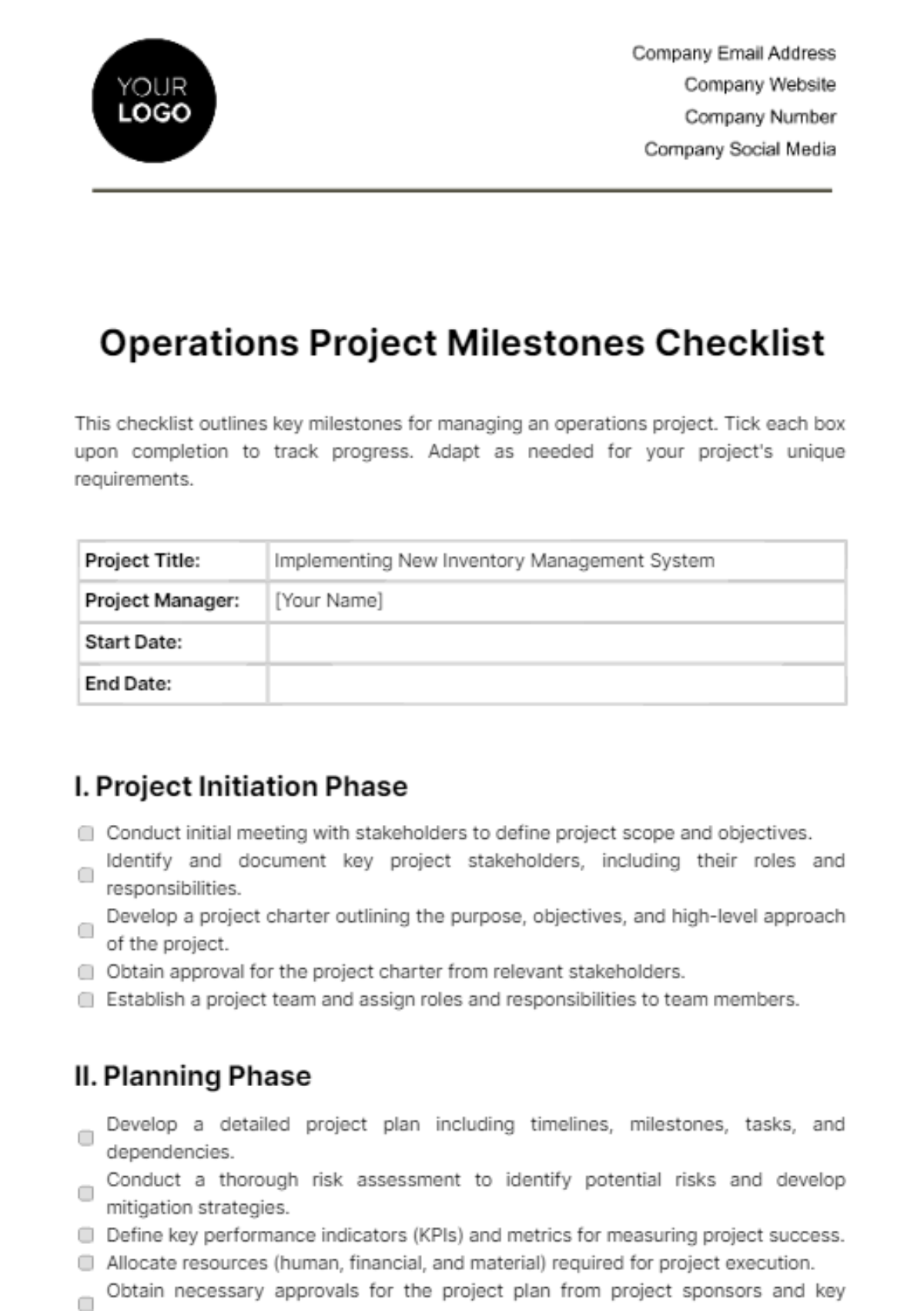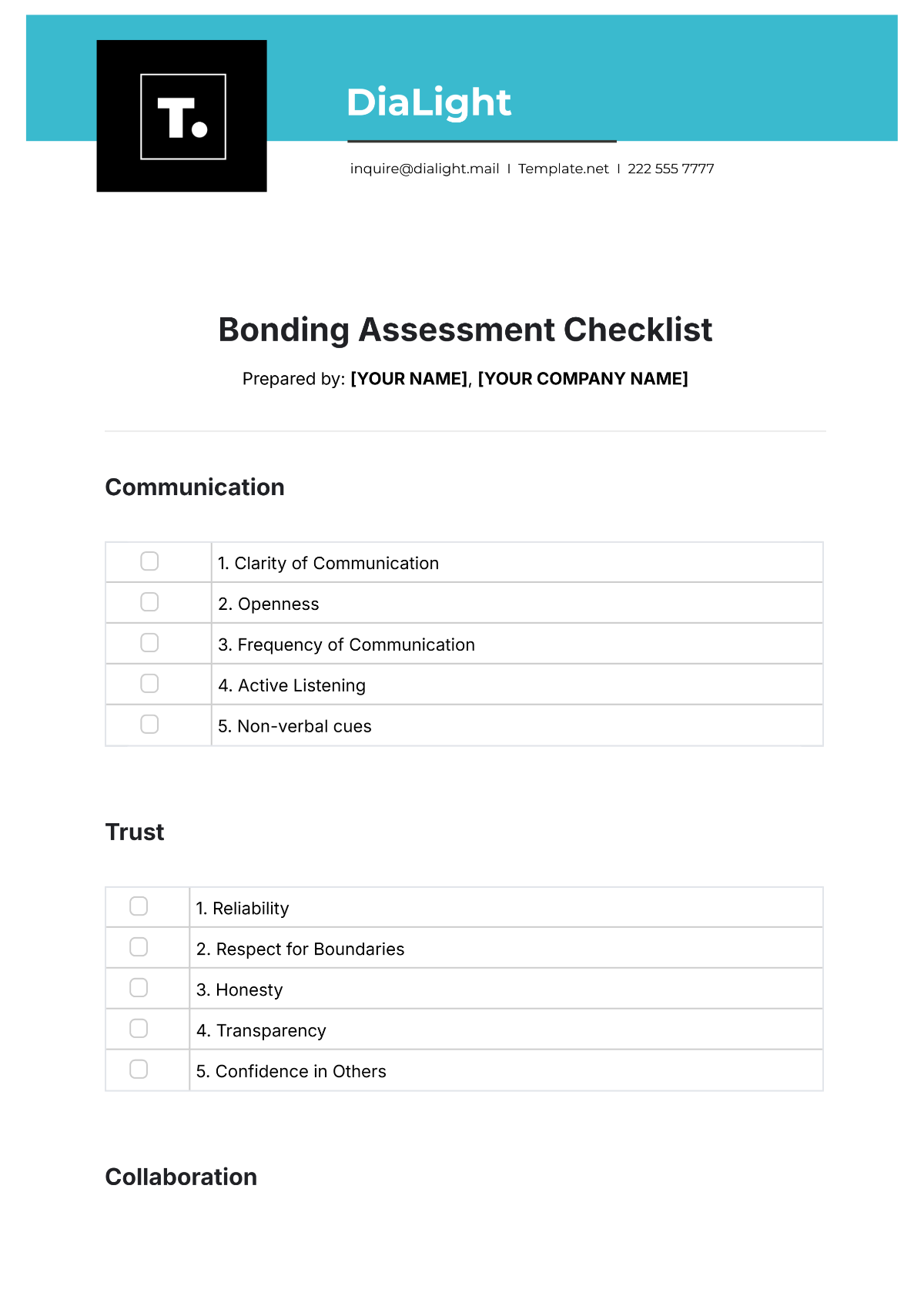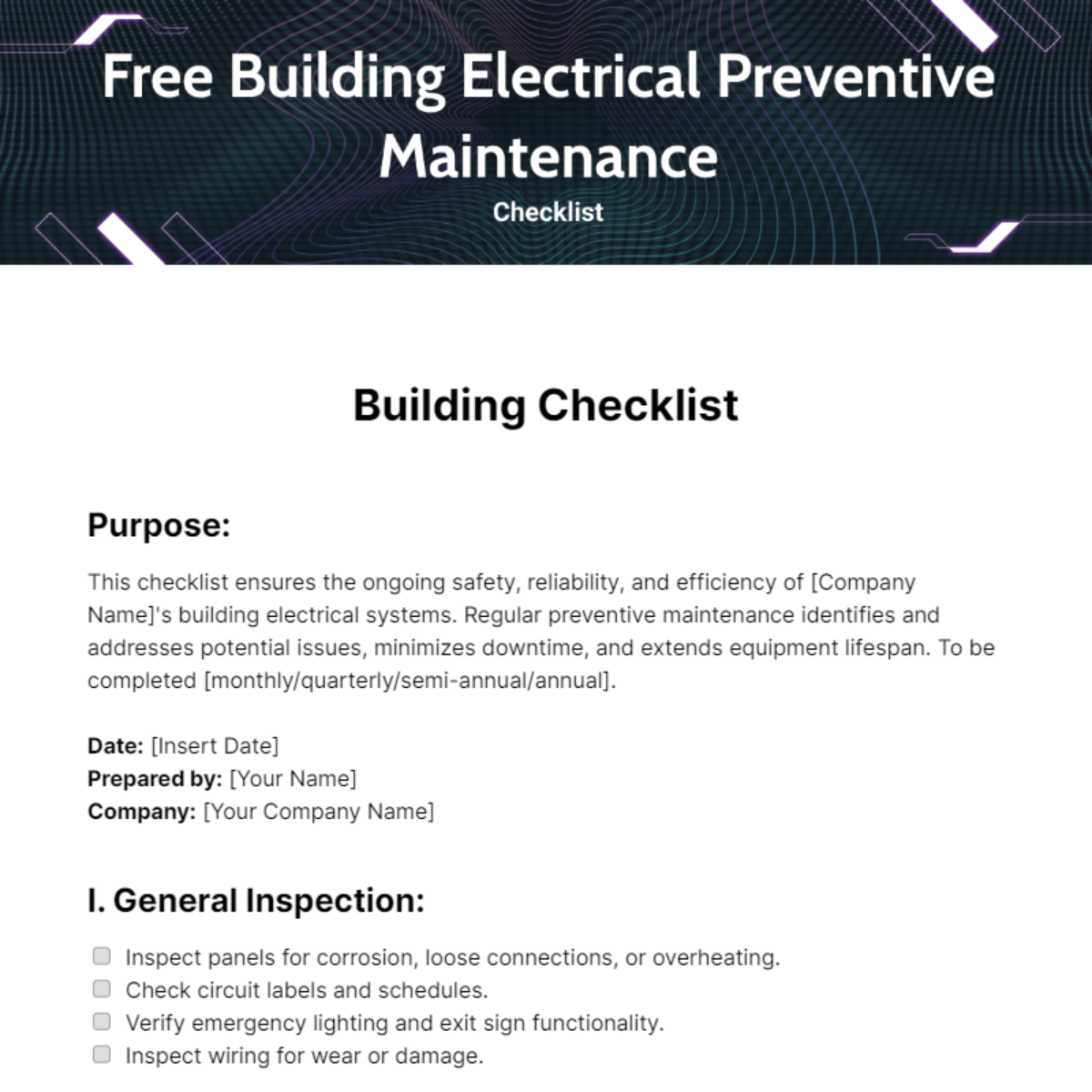Bonding Assessment Checklist
Prepared by: [YOUR NAME], [YOUR COMPANY NAME]
Communication
1. Clarity of Communication | |
2. Openness | |
3. Frequency of Communication | |
4. Active Listening | |
5. Non-verbal cues |
Trust
1. Reliability | |
2. Respect for Boundaries | |
3. Honesty | |
4. Transparency | |
5. Confidence in Others |
Collaboration
1. Willingness to Work Together | |
2. Shared Goals | |
3. Support and Assistance | |
4. Responsiveness to Suggestions | |
5. Joint Problem-Solving |
Emotional Support
1. Empathy | |
2. Encouragement | |
3. Patience | |
4. Comfort in Vulnerability | |
5. Positive Reinforcement |
Conflict Resolution
1. Open Discussion of Issues | |
2. Constructive Feedback | |
3. Willingness to Compromise | |
4. Respectful Disagreement | |
5. Solution-Focused Approach |






